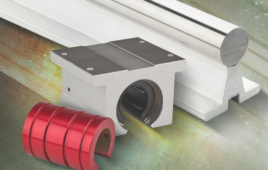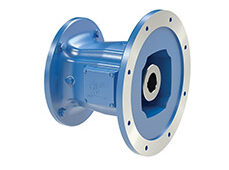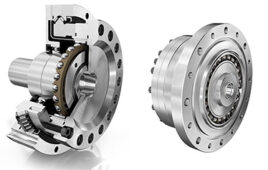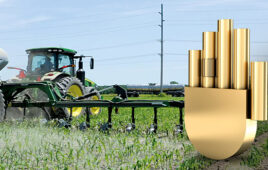Lead-free bearings are one of the missing pieces in the technological shift that will eventually allow large-bore engine manufacturers to reduce their emissions, while not compromising on reliability and lifespan. Research and development under the BeLEADFREE project could be the breakthrough they expected.
Whilst lead disappeared from most engines a long time ago, some sectors still have no choice but to use it. These include manufacturers of large-bore engines for the likes of boats and power generation applications: torn between the need to reduce exhaust emissions, stop using lead and satisfy ever more stringent criteria for engine design, these industries have had trouble coping with the pace of society’s changes.
There is, however, strong stakeholder interest in potential lead-free alternatives, as Dr Yi Zhang, research and development manager at Daido Metal, explains. “The global trend of reducing exhaust emissions, especially NOx, has already led to significant changes in large-bore engine design. But whilst these developments improve engine efficiency and reduce emissions, they also create an ever-harsher engine environment.”
This makes for a rather conservative industry when it comes to changing materials or production processes: whilst lead replacement for the sake of environmental protection and better engine design is acknowledged as a must, large-bore engines are expected to remain in service for tens of thousands of hours. The slightest technical or reliability issue could lead to catastrophic failure.
The BeLEADFREE project might be just what the industry had been waiting for: large‐bore engine bearing products that are not only lead-free, but also address the technical challenges faced by global large-bore engine manufacturers.
In only two years, the project consortium managed to successfully come up with novel manufacturing approaches, design and build a pilot production line and validate the performance of its new material on a real single cylinder engine with an independent EU testing organisation.
“We have reached our initial objective on lead reduction and elimination without compromising on the performance required by the market in terms of future large-bore engine design,” Dr Zhang says. “The test, which included an independent validation of the single cylinder engine, has demonstrated a significant improvement in terms of fatigue, wear, cavitation, corrosion and tribological performances. This means, in short, that the lifespan of current materials is considerably extended and, subsequently, that the negative impact of large-bore engines on our environment will be reduced thanks [to] less frequent replacements.”
As Dr Zhang points out, the material’s structure can also vary under different loading conditions, which allows it to adapt automatically and optimise engine operation. This, in turn, improves fuel efficiency and reduces emissions.
The new material has been proved on both environmental and technical aspects at high technology readiness level, TRL, and Daido Metal plans to keep promoting it in the near future. Stakeholders’ feedback has been very positive so far, and Dr Zhang says that customers now seem to have more confidence and desire to accept the new material for their engines.
Commercialisation shouldn’t be expected anytime soon due to the long product development cycle associated with large-bore engine industry. However, Dr Zhang hopes that most the industry will adopt and shift towards lead-free large-bore engine development within five years, in light of BeLEADFREE’s achievements.
Filed Under: Bearings, Product design




